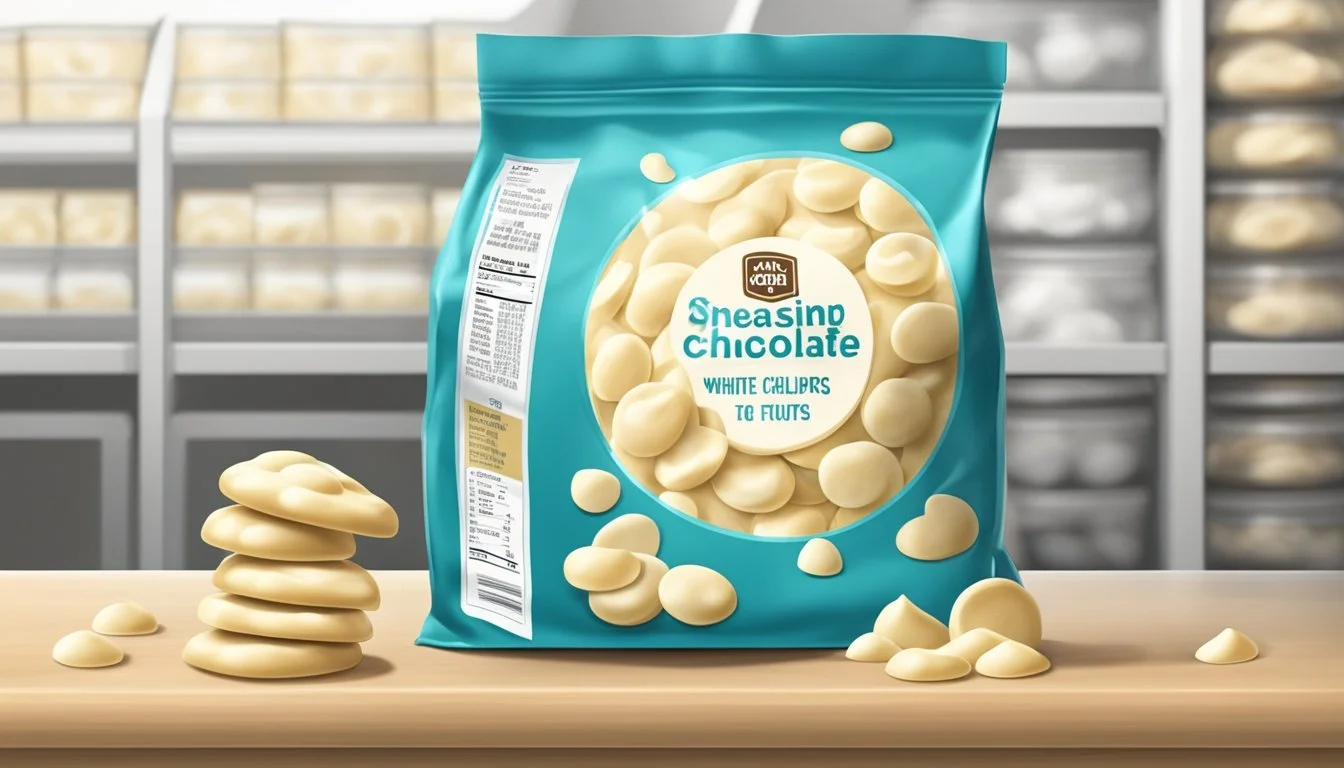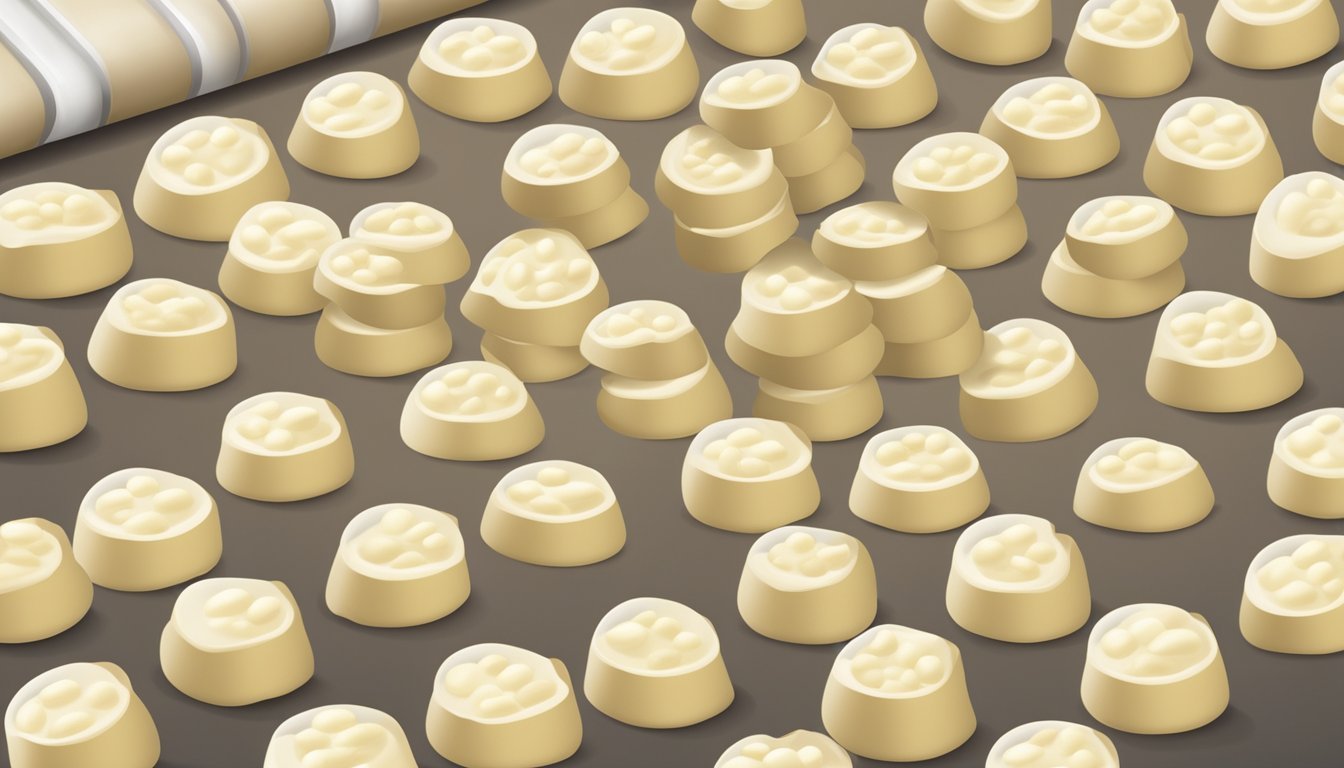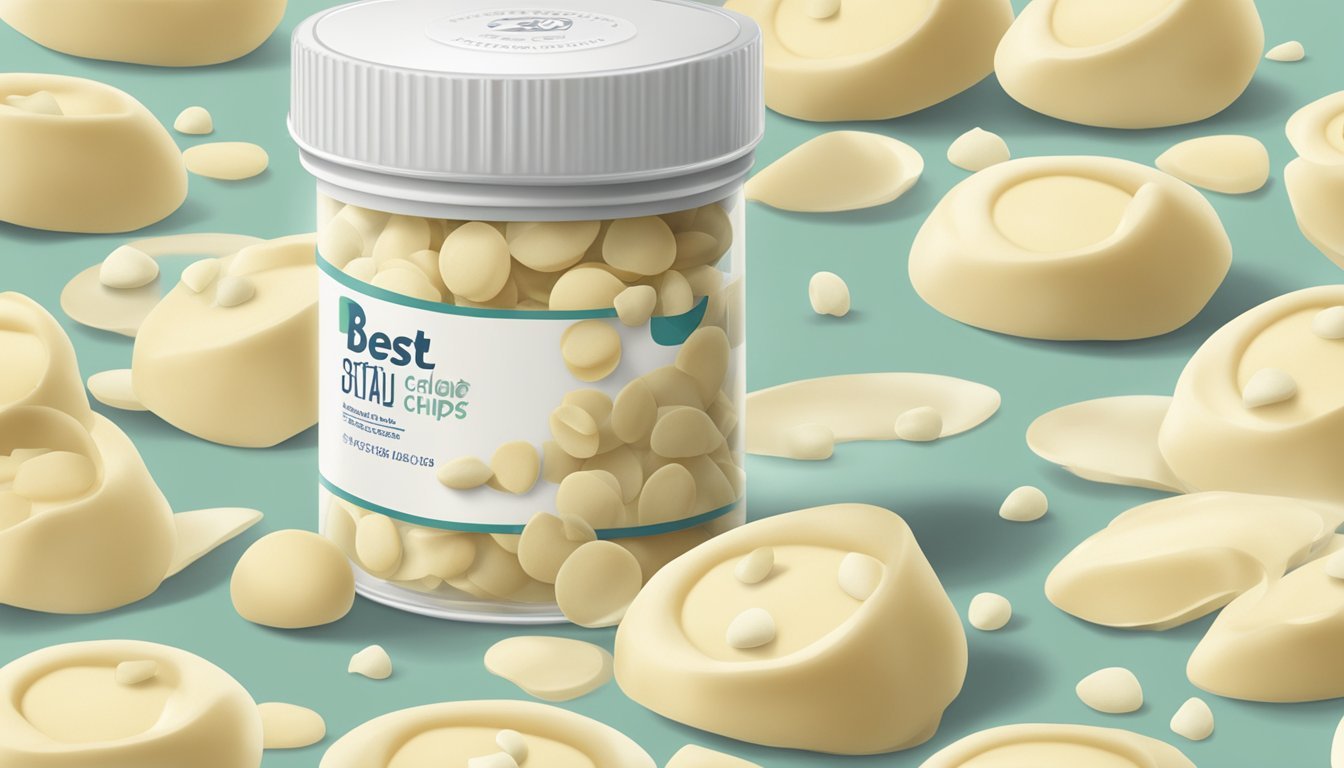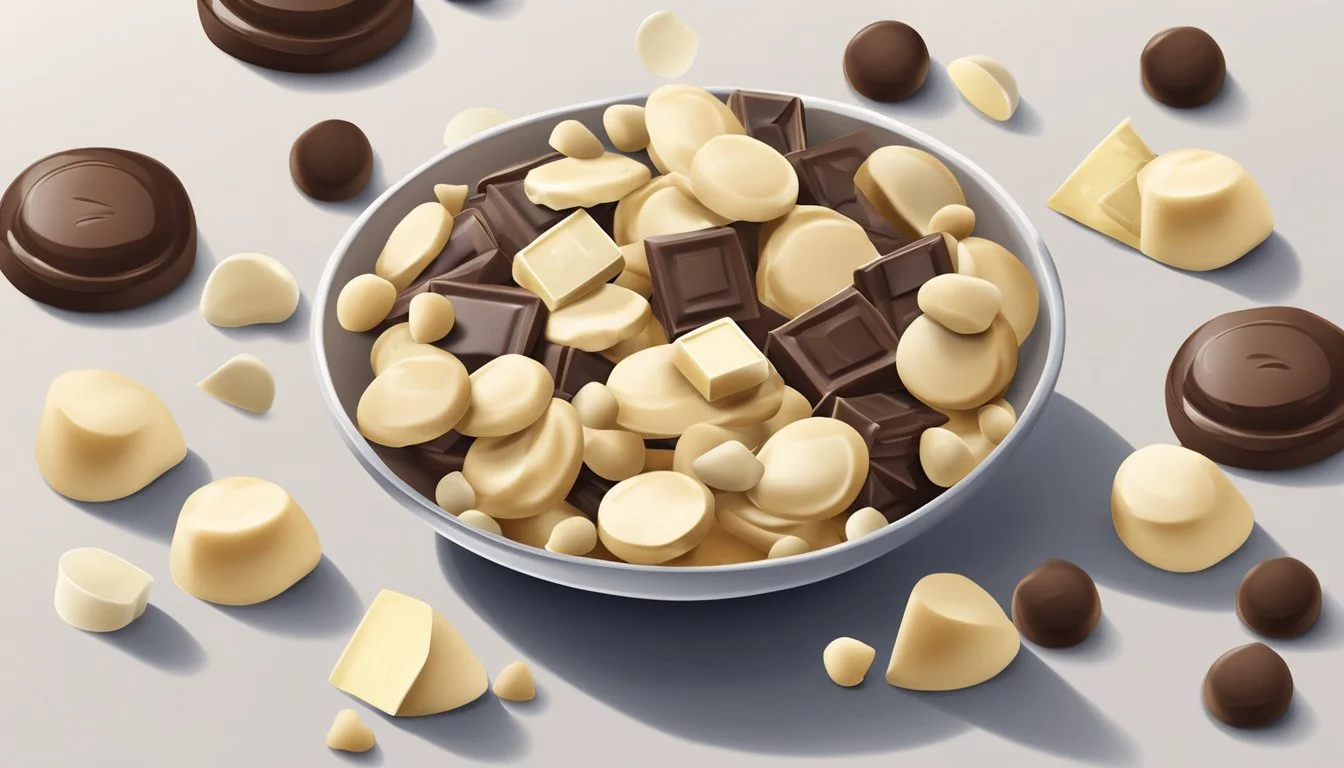How Long Do White Chocolate Chips Last?
Shelf Life and Storage Tips
White chocolate chips (how long do white chocolate chips last?) are a versatile ingredient found in many kitchens, but unlike their dark and milk chocolate (What wine goes well with chocolate?) counterparts, they possess a delicate composition that can affect their longevity. They typically last for about 6-9 months when stored properly in a cool, dry place. Their shelf life is influenced by factors such as temperature, humidity, and exposure to strong odors, given that white chocolate contains a higher amount of cocoa butter (how long does cocoa butter last?) and dairy.
To ensure the best quality of white chocolate chips for use in baking and cooking, it's essential to monitor their storage environment and adhere to recommended conditions. White chocolate should be kept at a stable temperature between 60°F -75°F, away from direct sunlight and tightly sealed to prevent the absorption of moisture or odors. Over time, even well-stored white chocolate chips may lose their flavor and texture, underscoring the importance of using them within the recommended time frame.
Understanding White Chocolate Chips
White chocolate chips are a popular ingredient used in various desserts, from cookies to cakes. Unlike dark or milk chocolate, white chocolate doesn't contain cocoa solids – instead, it is characterized by its primary components: cocoa butter, milk content, and sugar (how long does sugar last?). They offer a rich, creamy taste and a melting texture that enhances the flavor profile of baked goods.
The content of white chocolate chips typically includes:
Cocoa Butter: The fat extracted from cocoa beans, giving white chocolate its smooth texture.
Milk Content: Adds a creamy taste and contributes to a softer texture compared to dark chocolate.
Sugar: Acts as a sweetener and affects the melting point and texture.
Additives: May include lecithin as an emulsifier and vanilla for flavoring.
Here's a brief look at the quality and type of white chocolate chips:
Quality: Defined by the proportion of cocoa butter and milk content. Higher quality white chocolate chips contain more cocoa butter and less unnecessary additives.
Type: Generally, there are two main types – standard white chocolate chips used for general baking and high-quality or gourmet chips that have a higher cocoa butter content and are preferred for specialty desserts.
It is crucial to understand that despite the absence of cocoa solids, the cocoa butter's presence makes white chocolate chips sensitive to heat and humidity. Storage should therefore be in a cool, dry place to maintain their quality, especially since they can absorb odors from their environment. Properly stored, they can retain their best quality for several months.
Determining Shelf Life and Quality
In understanding how long white chocolate chips last, it is crucial to consider several factors that affect shelf life and determine signs of spoilage. The effects of consuming expired chocolate chips are also important to note for quality and safety.
Shelf Life Factors
White chocolate chips have varying shelf lives depending on several key factors:
Expiration Date: The manufacturer's estimate, often labeled as 'best by' or 'best before,' gives consumers an indication of how long chips will retain optimum quality.
Storage: Proper storage is essential. White chocolate chips should be kept in a cool, dry place, away from direct sunlight and heat sources.
Temperature and Moisture: These elements affect shelf life significantly. Chips stored at a stable temperature and low humidity tend to last longer.
Identifying Spoilage
Noting changes in the white chocolate chips can help determine if they are no longer suitable for consumption:
Smell: An off-putting odor is often the first sign of spoilage.
Color: Any discoloration can indicate that the chips have gone off.
Texture: White chocolate chips that have become extremely hard or have a white coating may indicate age or exposure to moisture.
Taste: A rancid or stale taste is a clear indicator of spoilage.
Effects of Expiration
Post-expiration, chocolate chips may exhibit:
Quality Loss: Even if chips do not become inedible, there's a loss in taste and texture after the expiration date.
Safety Concerns: While chocolate chips can be safe to eat after their expiration date, mold or rancidity renders them inedible.
Shelf life can extend past the expiration date if storage conditions are optimal, but always check for spoilage signs to ensure quality.
Optimal Storage Solutions
Proper storage is crucial for maintaining the quality and extending the shelf life of white chocolate chips. By employing effective at-home methods and understanding long-term preservation techniques, one can ensure that white chocolate chips remain in the best condition.
At Home Storage Methods
Temperature Control: White chocolate chips should be stored at a cool, consistent temperature, ideally at normal room temperature which is typically around 68°F to 72°F (20°C to 22°C).
Pantry Storage: A pantry or a cool, dry place away from direct sunlight is ideal for short-term storage.
Refrigerator Storage: For a slightly extended shelf life, storing white chocolate chips in the refrigerator is advisable. They should be placed in an airtight container or tightly wrapped to prevent them from absorbing odors.
Long-Term Preservation
Freezing: For long-term storage, freezing white chocolate chips can be effective.
Preparation:
First, ensure the chocolate chips are tightly wrapped or in a heavy-duty freezer bag to avoid freezer burn.
Freezer Storage:
They should then be placed in an airtight container before storing in the freezer.
Note: When removing white chocolate chips from the freezer, allow them to reach room temperature before opening the container to prevent condensation, which could affect their quality.
Handling and Usage Tips
White chocolate chips can enhance the flavor and texture of various desserts and baked goods, but proper handling is essential to preserve these qualities. From incorporating them into recipes to avoiding common pitfalls, here’s how to make the most of white chocolate chips in your kitchen creations.
Incorporating into Recipes
When adding white chocolate chips to recipes, one must consider their sweetness and how they'll pair with other ingredients. They have a rich, creamy flavor that can complement fruits and nuts in desserts such as cookies, pancakes, or waffles. For baking, ensure the chips are evenly distributed to avoid clumping. If melting is required, do so gently using a double boiler or microwave in short bursts to prevent burning, which can create a grainy texture.
Avoiding Common Mistakes
To maintain the integrity of white chocolate chips, it is critical to store them correctly:
Direct Sunlight: Always keep white chocolate chips away from direct sunlight to prevent fat bloom or sugar bloom, which manifests as a white coating on the chips and can affect texture and flavor.
Cool and Dry Storage: The best storage condition for white chocolate chips is in a cool, dry place, ideally between 60°F and 75°F. A pantry or cupboard away from heat sources is ideal.
Airtight Containers: To avoid the chips from absorbing odors, store them in airtight containers. This also keeps moisture at bay, which can cause them to become soft or moldy.
Usage After Opening: Once opened, white chocolate chips should be resealed tightly. While they generally last for 1 year for best quality, they can last longer when stored properly, though they may lose some flavor and become more susceptible to texture changes.
Incorporate white chocolate chips into your recipes with confidence by using them as a topping for pancakes or waffles, folding into batters, or creating a rich dipping sauce. Remember to mix them gently to maintain their shape and prevent them from becoming stale or developing an off-taste due to improper storage.
Different Types of Chocolate Chips
Chocolate chips come in various types, each with distinctive ingredients and characteristics. These differences affect not only taste and use in recipes but also shelf life.
Comparing Varieties
There are three main types of chocolate chips: milk chocolate chips, dark chocolate chips, and white chocolate chips.
Milk Chocolate Chips: They include milk powder, sugar, cocoa butter, and cocoa solids. The presence of milk increases the fat content and provides a creamy texture.
Dark Chocolate Chips: These contain a higher percentage of cocoa solids and less sugar than milk chocolate chips, giving them a richer flavor and darker color.
White Chocolate Chips: Unlike their counterparts, white chocolate chips do not contain cocoa solids; they are made from cocoa butter, sugar, and milk solids. The absence of cocoa solids gives them a pale color and a different flavor profile.
Type Cocoa Solids Milk Solids Sugar Fat Milk Chocolate Less than dark Yes More than dark Higher due to milk solids Dark Chocolate Highest No Less than milk Varies, generally less White Chocolate None Yes Comparatively high High due to cocoa butter
Substitutes and Alternatives
Substituting one type of chocolate chip for another can profoundly affect the outcome of a recipe. When it comes to substitutes:
For Milk Chocolate Chips: Dark chocolate chips can be a substitute if a less sweet and more intense chocolate flavor is desired.
For Dark Chocolate Chips: Milk chocolate chips can replace them if a sweeter, milder chocolate flavor is preferred.
For White Chocolate Chips: Due to their unique flavor and composition, finding a direct substitute is challenging. However, one could potentially use leftover cocoa butter mixed with sugar and milk powder as an alternative in some recipes.
Each type of chocolate chip can vary in its shelf life due to the differing amounts of sugar, fat, and preservatives. Sugar and high fat content can help preserve chocolate chips longer, while the presence of milk can shorten the shelf life. It is also crucial to store them correctly, as proper storage can extend their usability beyond the expiration date indicated on the packaging.






